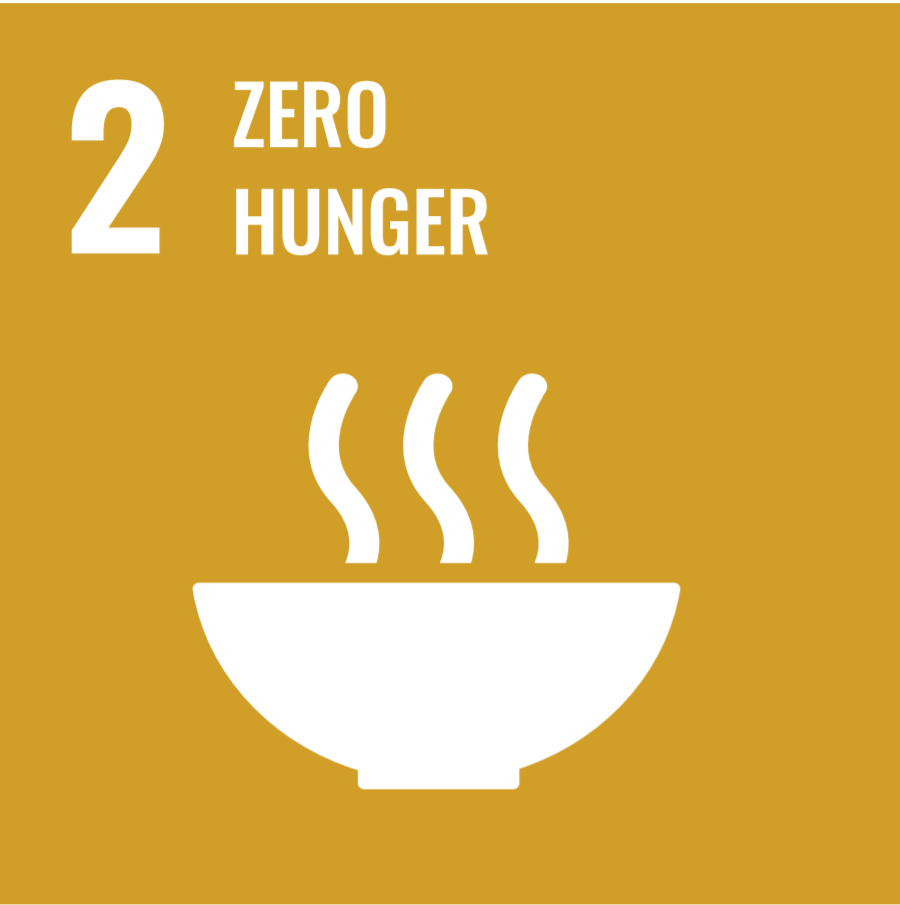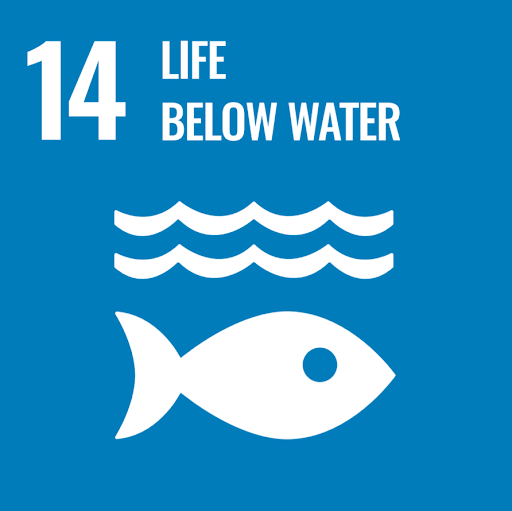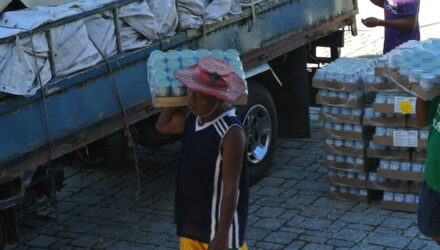Global Food Security

Delivering Nutritious Seafood To Those Who Need It Most
The Alaska Global Food Aid Program is a partnership of the State of Alaska and its fishing industry to expand the market and develop new customers for Alaska Seafood products through U.S. Government food and nutrition programs reaching millions of food aid consumers across America and around the globe.
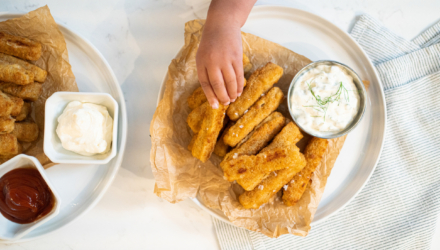
Food, Nutrition & Safety Net Programs
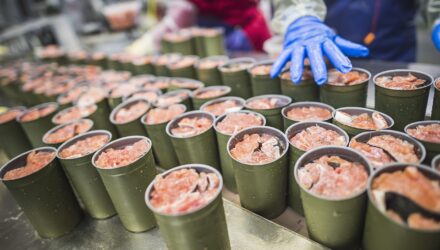
Disaster Relief
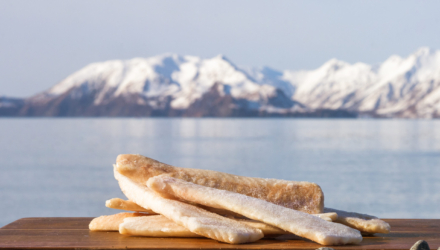
Product Development
Sustainable Development Goals
Protecting Alaska’s fisheries with sustainable practices helps address hunger and food insecurity. Delivering safe, sustainable wild Alaska Seafood and contributes to the United Nations’ global Sustainable Development Goals #2 and #14.
- By 2030, end hunger and ensure access by all people, in particular the poor and people in vulnerable situations, including infants, to safe, nutritious and sufficient food all year round.
- Conserve and sustainably use the oceans, seas and marine resources.
Wild Alaska seafood is the perfect choice for food aid programs
Alaska seafood products are ideal for food aid purposes in the U.S. and overseas. The offerings have expanded from canned salmon to fillets of wild Sockeye salmon and Alaska pollock, and a variety of frozen formats like wild Alaska pollock sticks and nuggets. They are well prized for their nutrition and taste by recipients of all ages in all types of programs. Alaska seafood is one of the best sources of marine protein and omega-3 fatty acids in the food aid basket, and two servings a week per person meet the latest Dietary Guidelines for Americans (2020-2025).

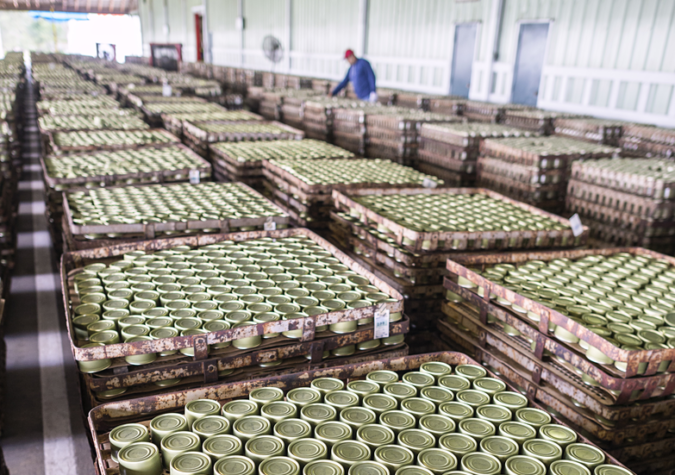
Products
Shelf-stable Alaska seafood products are ideal for emergency and chronic food programs in the U.S. and overseas. Easy to transport and prepare, these products are ready-to-eat – they need no cooking, fuel or potable water, and have a long shelf life.
Domestic food, nutrition and safety net programs also use a variety of frozen wild Alaska salmon and pollock products and forms. The last years have seen an uptick in consumer-ready forms of seafood in all food aid programs as they expanded to address growing needs and supply chain disruptions. We are working with industry to develop new products and species to meet the USDA’s evolving food and nutrition program needs.
-
Wild Alaska salmon
-
Alaska canned salmon has long been part of the domestic food and nutrition assistance programs’ food basket. Since 2004, it has been available for international food aid in school meals; food banks and pantries; disaster relief; nutrition programs for women, infants, children, and individuals with chronic diseases such as tuberculosis and HIV/AIDS. Food aid organizations have included Alaska canned salmon in their programs in Bolivia, Cambodia, Cameroon, Guatemala, Guinea Bissau, Jamaica, Laos, the Philippines, Sri Lanka, and Uganda.
Domestic and international food programs typically use canned pink salmon, the most widely available and often the least expensive. Canned keta salmon and canned red (sockeye) salmon are also provided when available. While nutrition is very similar, the three species can be distinguished by their color and flavor.
In recent years, USDA has added wild sockeye salmon fillet portions (4 oz. frozen) to their traditional food offerings for domestic distribution. These were requested specifically by tribal leaders as a highly nutritious traditional seafood option that fits their clients’ cuisine. Read more here.
Learn more about Alaska salmon -
Wild Alaska pollock
-
Delicious and versatile, Alaska pollock has a mild taste, white flaky meat and a delicate texture. It is a prized ingredient in more than 1,000 consumer products worldwide, including value-added seafood meals; breaded seafood favorites, such as fish sticks, fish sandwiches and fish and chips; and surimi seafood products. It is also widely used in the foodservice sector as a premium whitefish option.
Frozen Alaska pollock in forms such as whole grain breaded fish sticks and nuggets or in pollock tacos are a mainstay of the USDA school lunch menu. Due to popular demand, the USDA includes once-frozen Alaska pollock products in the school lunch programs and Alaska pollock fillet portions (4 oz., frozen) as well as breaded sticks and nuggets to the options for food banks.
One of the most abundant fish in the world, Alaska pollock lives throughout the North Pacific Ocean and Alaska’s Bering Sea, as well as in the Gulf of Alaska. The Alaska pollock fishery is the largest fishery in the United States and the largest certified sustainable fishery in the world. Read more about pollock products like pollock portions and pollock sticks and nuggets.
Learn more about Alaska pollock -
Wild Alaska herring
-
The Alaska Global Food Aid Program is developing an evidence based food aid market for Alaska canned herring. With comparable levels of proteins and nearly twice the amount of omega-3’s, herring offers an exceptional alternative to canned keta and pink salmon in food aid. Find out more.
Consumer testing demonstrated excellent acceptability of canned herring among families, women and infants and school age children in Guatemala, Ghana, Guinea-Bissau, Kenya, Liberia, Mozambique, Republic of the Congo South Africa, and Uganda. Canned herring has great results in treating and preventing malnutrition. In Liberia, canned herring consumed over nine-months secured nutritional recovery among people living with HIV/AIDS and a three-month randomized, controlled trial in Guinea-Bissau prevented nutritional los among children in three villages during the lean season.
Increasing herring use also benefits many rural Alaska communities where the species is abundant. With increased nutrition demands in the international food aid programs and the finite supply of current shelf-stable Alaska seafood products, the Alaska Global Food Aid Program recognizes Alaska canned herring as a valuable and new product targeted to food assistance programs worldwide.
Herring is consumed around the world as fillets and has a commercial market. In 2022, ASMI conducted an in-depth report on the market, fisheries and dynamics of the North Atlantic herring industry with a view to investigating opportunities, applying these learnings and maximizing revenue for Alaska’s herring fisheries. Read the project report.
They are popular in the U.S. as well and Seattle hosted “Herring Week” featuring wild Alaska herring in dishes across the city’s restaurants and markets. The Global Food Aid Program and ASMI compiled featured recipes in its Wild Alaska Herring Recipes cookbook.
Learn more about Alaska herring -
Wild Alaska seafood powder
-
The Alaska Global Food Aid Program’s food innovation activities seek new, sustainable, and efficient products. Wild Alaska seafood powder is a concentrated source of high-quality marine protein with a balanced composition of essential amino acids and marine omega-3 fatty acids.
Seafood powder can be made from most Alaska seafood sources, including underutilized fish byproducts, forging new economic opportunities for Alaskans. Wild Alaska seafood powder reduces waste in the environment, increases the value of seafood resources, and provides an important new source of high protein nutrition. This is a clear opportunity for the Alaska seafood industry.
Full utilization is a big part of the equation. Seafood byproducts are gently processed to yield a dry product that can be rehydrated while maintaining all functionality and nutrition of the natural protein.
This ultra-high protein source has commercial potential as great vehicle for delivering an added variety of trace minerals, as well as a nutritious additive to shakes, smoothies, and other foods. Learn more about wild Alaska Seafood powder.
Learn more about full utilization of Alaska seafood
Global Food and Nutrition Security
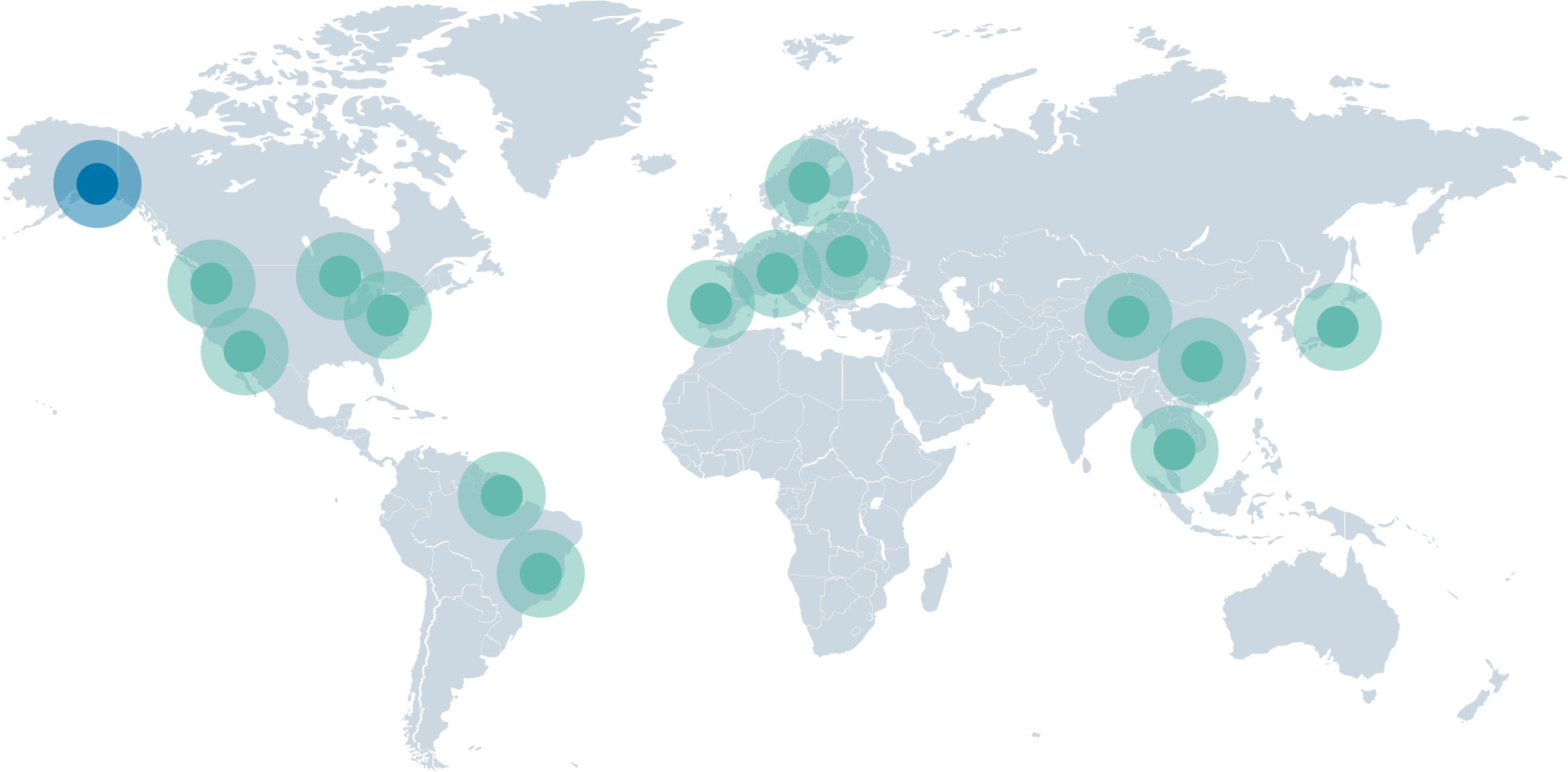
Economic and political events around the world continue to define the food security landscape. In 2021, almost 2 billion people on the planet did not have regular access to safe, nutritious, and sufficient food. Shelf-stable products and nutrient-dense, high-quality foods like canned Alaska salmon and wild Alaska pollock address the unique needs of this market, meeting demand from domestic and international programs, bringing food security to mothers, children, and families, in schools, health centers, orphanages, food banks and more.
Alaska seafood is uniquely suited to support growing infants and children as well as pregnant and breastfeeding women, with its unique balance of nutrients and essential fats as advised in the Dietary Guidelines for Americans (2020-2025).
Learn more about Alaska seafood nutritionFood Security & Nutrition Resources
The State of Food Security and Nutrition In the World 2020 video
Alaska Seafood’s Super Nutrition | ASMI
US Dietary guidelines for Americans
Food Aid in the US
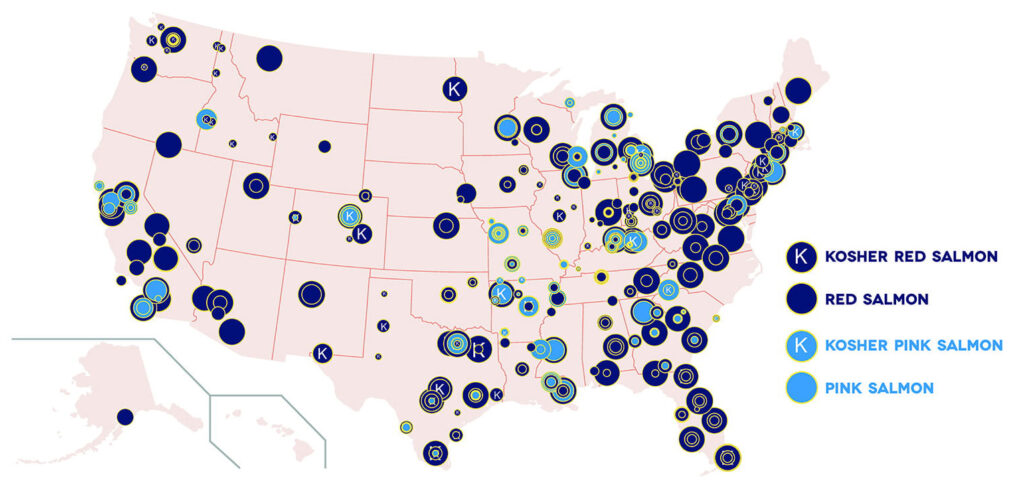
Canned salmon distributed in food banks.
Domestic food and nutrition assistance programs have a broad reach across the country. The United States Department of Agriculture (USDA) manages food and nutrition assistance programs that help provide food to millions of Americans every day. They include the Supplemental Nutrition Assistance Program (SNAP), the Supplemental Nutrition for Women, Infants and Children Program (WIC), School Meals, and the Temporary Emergency Food Assistance Program (TEFAP), among others.
Ensuring that Alaska seafood is an engrained component of food assistance programs is beneficial and the demand is large. In 2020, Alaska provided 100 million servings of Alaska canned salmon to USDA programs that reached men, women and children in every state across the country
Our Partners
USDA | FNS: USDA Food & Nutrition Service
NSLP | National School Lunch Program
TEFAP | Temporary Emergency Food Assistance
Feeding America
WIC | Special Supplemental Nutrition Program for Women, Infants, and Children
SNAP | Supplemental Nutrition Assistance
USDA | AMS: USDA Agricultural Marketing Service

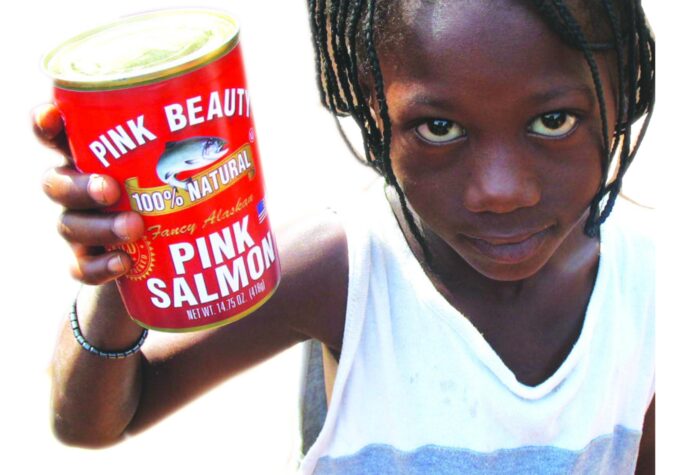
Food Aid Worldwide
Today, over 800 million people across the globe suffer from hunger with up to 2 billion facing malnutrition and food insecurity.
In 2004, the State of Alaska launched its international food and relief efforts to make the abundance of wild and sustainable Alaska seafood available to those in need and share the benefits of these super foods. The Alaska Global Food Aid Program strives to help alleviate hunger by providing quality products in emergency situations and longer term, until food security is achieved. This also supports Alaska’s fishing communities.
Alaska salmon and herring have been introduced to over a million new consumers worldwide through the Alaska Global Food Aid Program and partner programs: USDA | FAS U.S. Department of Agriculture, Foreign Agriculture Service (FAS): Food for Progress, McGovern-Dole International Food for Education Child Nutrition Programs; USAID | U.S. Agency for International Development (USAID) | Food for Peace Program.
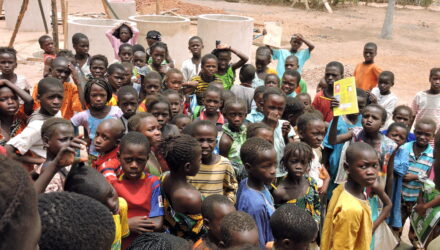
Africa
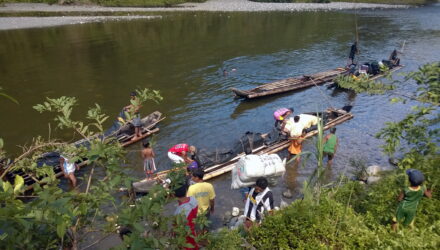
Asia
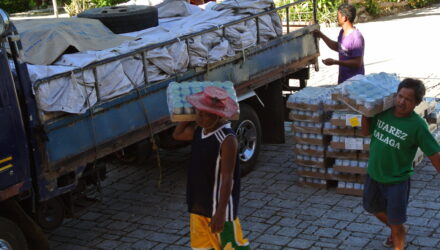
Latin America & Caribbean

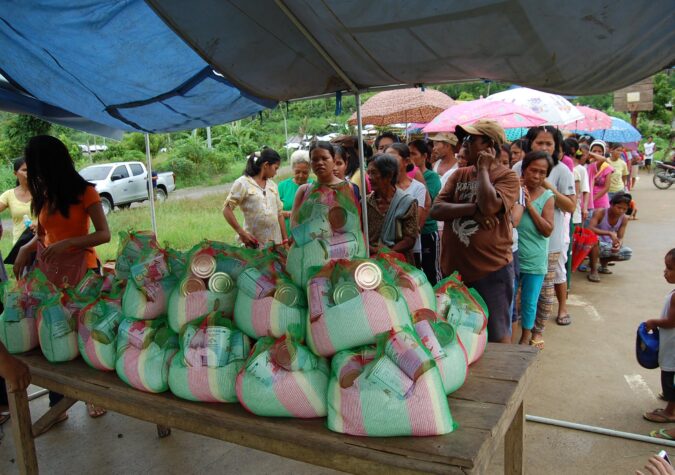
Disaster Relief
Alaska canned salmon has proven to be an efficient relief product for emergency situations. Self-stable, it doesn’t need refrigeration, potable water or cooking and can be eaten straight from the can or mixed with local ingredients.
Alaska canned salmon and herring are perfect for use in crises worldwide, from fast-moving earthquakes, to ongoing demands from massive flooding or hurricanes. Disaster preparation, both domestic and international, is more relevant now than ever and we work to maintain shelf stable canned Alaska seafood ready to meet humanitarian needs anywhere in the world.

